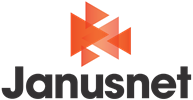The words "legacy data" are enough to give most data managers a headache. Organizations today manage petabytes of unstructured, structured, continually aging data across multiple systems and platforms. Add the requirement to preserve or add data classifications to align with Zero Trust principles, and a headache can turn into a migraine in minutes.
The solution to marking compliance for legacy (and new) data is a faster, more affordable fix than most data managers realize, and the elements to make it happen already exist inside every organization: marking metadata. The properties of metadata to create contextual, descriptive details about files are well understood. Extending basic metadata properties to include data classifications ensures information is findable, accessible, and interoperable for human users and downstream systems.
A data-centric approach to marking.
Marking metadata with data classifications that are embedded, and therefore travel, with the information file enables automated actions that rapidly improve the efficiency and efficacy of how people and downstream systems manage information. Examples of downstream systems include attribute-based access controls (ABAC), DLP, discovery tools, EDRMS, and AI tools.
Adding classifications visible to the human eye is a complimentary step to marking metadata in managing information appropriately. Best practice to meet compliance requirements, reduce the risk of information mismanagement, and uphold Zero Trust principles is to perform both simultaneously.
Defining a common marking taxonomy and metadata expectations is foundational for successful information marking and control programs. Once this framework is defined your team can immediately start manually marking new and revisited content. Organizations can simultaneously run an eDiscovery process to automatically mark metadata per the defined rules and find legacy data and apply the same treatment.
Portable metadata standards inside a file give organizations all kinds of flexibility to access and use that metadata in the future. Introducing a data-centric strategy to define and own marking metadata creates long-term vendor independence, and lets organizations optimize system efficiency, security practice, and operational effectiveness for today and the future.
Best practice case study: ACME Inc
ACME Inc is a multinational defense contractor with a global marking program. Each jurisdiction (nation) has its own Intellectual Property (IP). The organization uses a range of discreet networks and a common network for corporate material to protect this IP from information spills. Each employee needs a different marking capability defined by their clearance level, the programs they work on, and a corporate marking standard.
The ACME team started its data marking program by defining a single data marking taxonomy and different marking schemas for the jurisdictions their business requires. The taxonomy covers visual and metadata markings.
The investment in common taxonomies and associated metadata paid off for ACME. With a technology-based data classification solution powered by Janusnet, their teams can make discreet changes, maybe in just one jurisdiction, without redesigning security and handling policies. The solution is easy and fast for users, compliance guidelines are honored, and the risk of mismanagement of sensitive information is minimized.
Why governments and contractors trust Janusnet for data marking.
For over 15 years, government and defense contractors and subcontractors have trusted Janusnet data classification solutions to meet compliance guidelines from civil to classified information marking. Customizable to meet diverse regulatory and commercial requirements, Janusnet lets organizations quickly distinguish between public, private, and sensitive data. A vendor-agnostic solution, Janusnet seamlessly integrates with existing infrastructures to let organizations manage information control better and enforce security policies.
Our differentiators for data classification include:
- Fast deployment with “set and forget” maintenance.
- Cloud, on-premises, and Sensitive Compartmented Information Facility (SCIF) ready.
- No extra software or servers needed.
- Proven compliance for a sophisticated range of requirements on a stable platform.
- Support for data-centric Zero Trust and attribute-based access frameworks.
- Comprehensive metadata marking and interoperability.
Janusnet’s market-leading data classification solutions are embedded in the most common applications your teams use daily, such as the Microsoft Office suite, making training and adoption quick and straightforward.
- We help organizations get quick wins with legacy information marking by:
- Helping people confidently identify data sensitivity.
- Introducing reliable practices and processes to mark data into the future.
- Using current handling techniques as a template for marking legacy data.
Find out how to get quick wins with your marking initiative in our whitepaper How to avoid unwanted time, cost, and complexity in your marking program
See Janusnet in action in this brief video.
Read how Januset supports Zero Trust frameworks.


